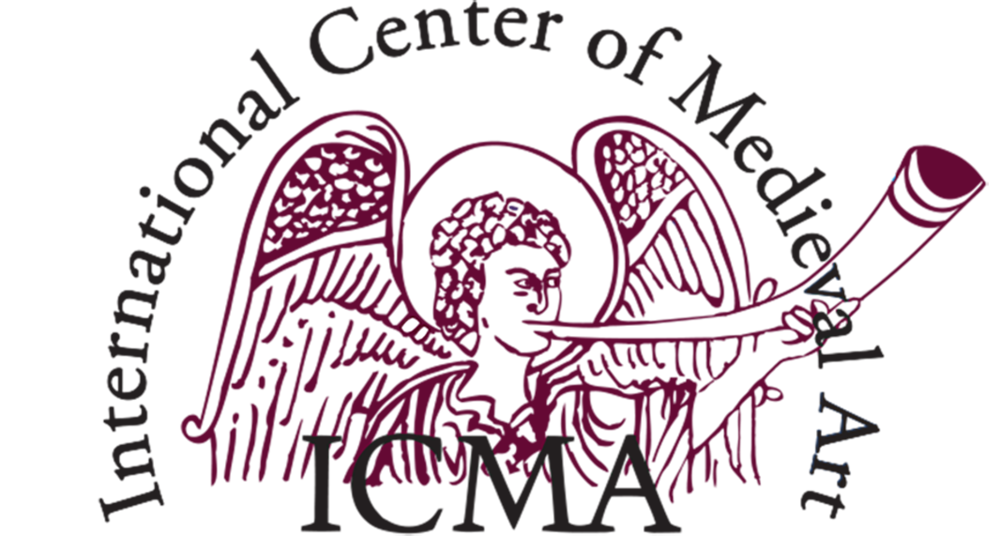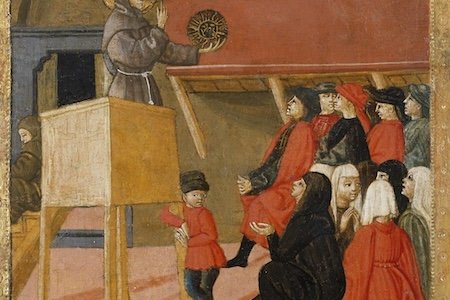Call for Papers
Embodied Preaching: Multisensorial Preaching Performances in Medieval Europe
Padua, 24-25 October 2024
Organized by Zuleika Murat, Pieter Boonstra and Micol Long
deadline 5 April 2024
The crucial importance of preaching in medieval Europe has long been acknowledged, not only for religious culture, but also for cultural, political and social history, art history and history of material culture. An interconnected pan-European phenomenon, to be effective preaching needed to be at the same time tailored to local tastes and conventions, shaping the message to the circumstances at hand. With the term “preaching” we understand the public performance of a speech believed to be divinely inspired and meant for religious and moral education. Most importantly, medieval preaching was not the static transfer of a text from preacher to audience: rather, it was an inherently dynamic and interactive activity, involving multiple actors through time and space, communicating religious knowledge within embodied and spatialized networks. The conference will focus on the multisensorial dimension of preaching, which goes beyond the content and style of the textual sermon, to include the personal appearance of the preacher, their voice and gestures (the “embodied” dimension), the material environment in which the preaching took place (the “embedded” dimension) and the use of “special effects” (such as sounds or fire) and objects as an integral part of the performance.
The role played by the material environment in which the preaching took place has received little attention, and mostly with reference to memory (Carruthers 1998, Bolzoni 2002). It has been pointed out that some late medieval religious leaders (such as Bernardino of Siena) referred in their speeches to specific elements of the material environment in which they were preaching (for example, artworks), presumably to help keep awake the attention of the audience and to “anchor” the teaching to material elements which could be seen by individuals on a daily basis. However, much remains to be done to understand whether and to what extent the specific material environment affected the overall experience of preaching (open vs closed space, specific environments such as churches, saint’s tombs, graveyards, squares and so on). Preachers operated amidst a visual network of objects and spaces, against a background of paintings, sculptures, and other images present within the same space where they performed, giving opportunity for the sermon to connect, contrast, or compete for attention. This also raises the question to what extent preachers adapted their preaching to the particular environment and planned the setting in which the preaching had to take place.
A further element that deserves to be considered is that, as an act of communication, preaching was not a one-way interaction: the audience, through their attitude, verbal and non-verbal reactions to the preaching played an active role which affected the experience both of the individuals gathered to listen and of the preacher. Based on this, we propose to approach preaching an interactive performance where multiple actors and multiple elements played a role. For this purpose, we will approach audiences using the notion of “socio-sensory environment”, and assuming the existence of specific sensoria depending on social, cultural and geographical factors. Preaching relied on the various senses to be properly understood and make a lasting impact: the oral and aural performance of the sermon took place within a visually accessible space, with the preacher using both voice and body (gestures, facial expressions) to convey a message. From the sermon text, listeners are often invited to fully employ their senses as well and to imagine themselves present at religiously significant moments: to see the scene before their eyes, to hear what was occurring, to smell, taste, and feel, their internal or imaginary senses giving rise for meditation and devotion. Meanwhile, the experiences of pleasant or unpleasant smells or feelings of cold, heat, or discomfort can also be investigated from a sensory perspective.
With a primary focus on Western Europe from the 12th to the 15th century, this conference aims to explore preaching in an innovative and holistic way, by considering the multisensorial dimension of the transmission and reception of the word of God in whichever form, verbal or non-verbal. By emphasising the range of activities aimed at communicating religious knowledge and devotional practice, and the multisensorial nature of such activities, this conference will explore new aspects of the multifaceted experience of medieval preaching.
We welcome abstracts for 20-minute papers in English. Scholars may address the topic with a broad approach but always considering the role of all the senses in the performance and reception of preaching. Paper topics may include, but are by no means limited to:
The role played by objects in the experience of preaching: for example objects and artworks used by preachers, devotional or practical items or other objects, such as hand warmers, used by the audience
Unconventional ways of preaching reliant on the senses, for example through music or theatrical performances
The role played by the senses in the experience of preaching, including smell, taste, and the interior senses (such as thermoception or proprioception)
The link between preaching and art or architecture, including when preaching outside of the church
How preaching was experienced differently by different audiences, including audience responses and interactions during preaching
Sermons or preaching that encompass discussions of physicality, embodiment, or materiality
Please send a title and abstract of no longer than 300 words, together with a short CV and personal data (max. 300 words), to the following emails: zuleika.murat@unipd.it; pieterhendrik.boonstra@unipd.it; micol.long@unipd.it
The language of the conference is English.
Deadline: 5 April 2024. Notifications of acceptance will be given by 26 April 2024.
Selected papers will be invited for publication in a collective volume.
This conference is organised by the ERC research project SenSArt – The Sensuous Appeal of the Holy. Sensory Agency of Sacred Art and Somatised Spiritual Experiences in Medieval Europe (12th-15th century), Grant Agreement nr. 950248, PI Zuleika Murat, Università degli Studi di Padova (https://sensartproject.eu/).
For a PDF of the Call for Papers, click here.
For more information, click here.

